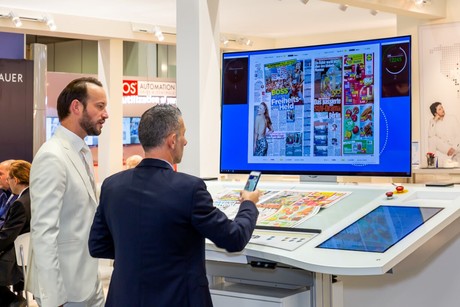WAN-IFRA: We’ve had a number of reports published in the past year or so espousing the effectiveness of print, in terms of engagement, reach, advertising and sustainability. Much of that is in comparison to digital. Why does the print vs. digital debate still make sense?
Manfred Werfel: Unfortunately, even newspaper industry insiders tend to forget that print is the mainstay of the business, accounting for more than 90 percent of total publishing revenues. It is therefore important to keep the performance of the printed newspaper in mind. Print is strong in terms of reach, reading time and reading intensity – or engagement – as well as sustainability. To this end, we have prepared and published reports on these topics.
Neil Duncan, PwC’s director of media insight, performance and assurance, said recently: “Replacing traditional media with digital is wrong.” I think he is right.
How would you characterise the investment vs. cost savings environment here in central Europe for newspapers and printers? And where is the focus on that?
In Europe, investments are still being made in newspaper production, even though investment targets have been changed. The main objectives are to maintain and extend the lifetime of machines and technical equipment and to increase efficiency and automation. Retrofit and services have become more important. The importance of new investments has decreased.
What do you think production executives visiting this year’s World Publishing Expo will be investigating?
Production executives will probably be interested to explore the changing set-up of the press manufacturers’ arena. The just-merged company manroland Goss web systems will – for the first time ever – seek contact with customers at an exhibition. In addition, Wifag will be back after years at Expo with a new business concept as Wifag Services.
There are a number of interesting new developments and products in the area of technical prepress and CTP. And many exhibitors offer automation, closed-loop solutions and retrofit services.
Mailroom systems are of special interest as production tools for standard and commercial products. And the paper market has changed considerably in terms of prices and availability. I can imagine that discussions will be manifold and lively at Expo.
What print innovations have caught your eye recently?
The IKEA “pee-on” ad, published at the beginning of this year, was a great surprise for many and an eye opener as well. IKEA combined a printed magazine ad with a pregnancy test. In case of a positive test result, the price of the advertised children’s bed was reduced automatically. They used sensitive ink to do that. Then, in spring we saw the first embedded video chip in a newspaper of the Star Media Group in Malaysia. Automatically playing video and audio chips were part of a bigger creative campaign for Pepsi.
The World Printers Forum published the report on High-Value Print Production last year and will publish a follow-up to that early next year. What will be the focus of the follow-up report?
High-Value Print Production mainly comprised the results of detailed surveys conducted across three separate areas: printing and publishing, materials manufacturers and equipment suppliers. The surveys included questions about product sectors, business targets and ambitions, and the materials and techniques used to fulfil them, after which the results were evaluated. For the most part the results were optimistic and upbeat, with some interesting regional differences.
The broad consensus was that for those companies willing and able to invest in widening their product appeal – either by staying with coldset production, augmented with upgraded papers and inks, maybe employing stitching and trimming; or expanding wholeheartedly into semi-commercial printing to attract new customers – the rewards are out there for the taking.
Those themes of protecting the longevity of publishers’ printing assets by maintaining the traditional newspaper business, whilst looking to supplement order books by expansion into new areas, were developed further by in-depth interviews with three of the printing industry’s leading-edge practitioners.
Based on the results of the first report, we developed questions for a more in-depth presentation. We plan to interview six industry experts for this follow-up project.
Interesting links:





